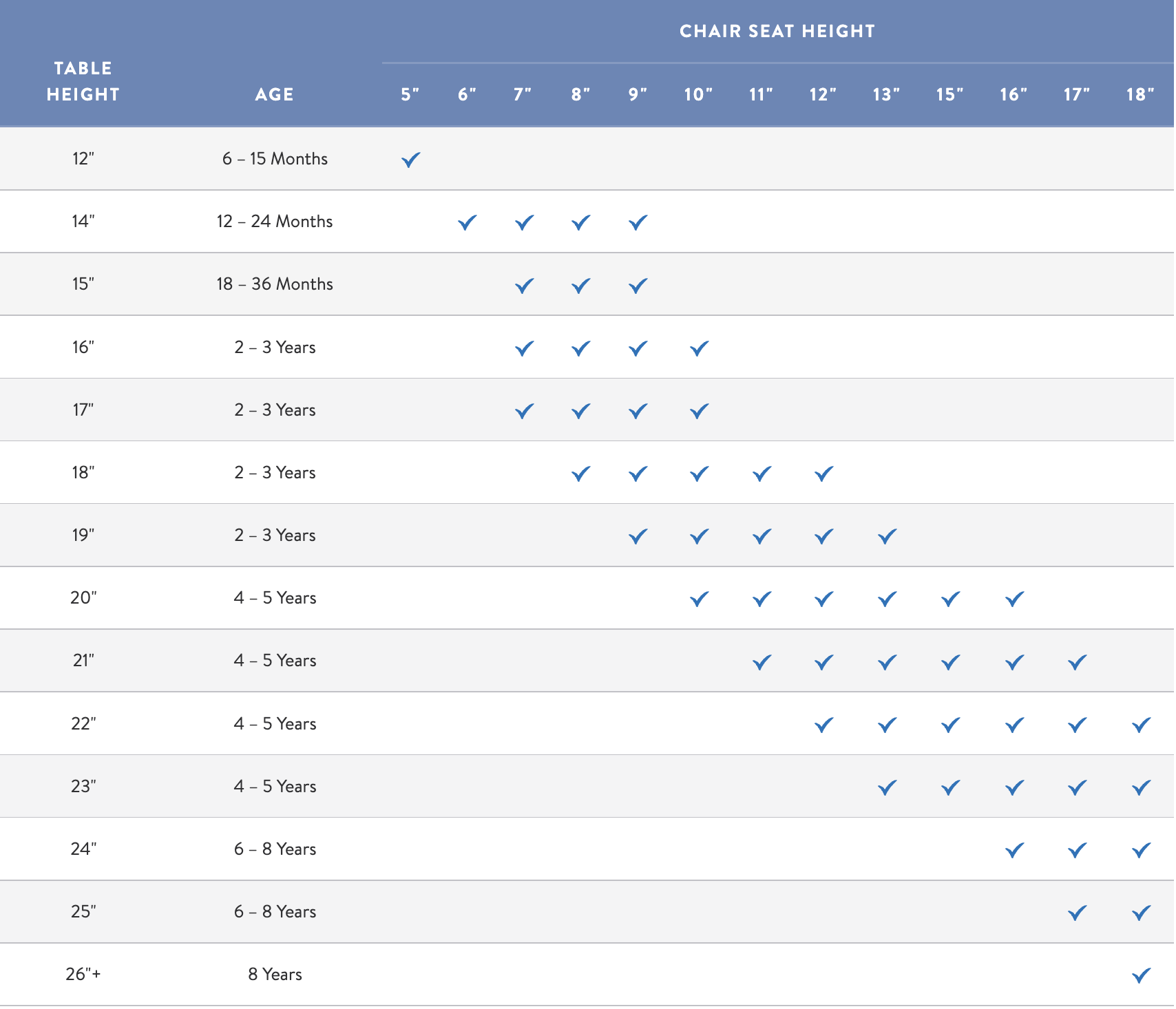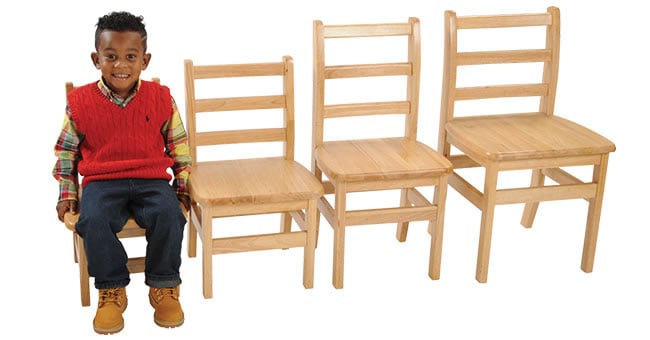Children are more likely to pay attention and are more open to learning if they are comfortable during class. You can positively influence the overall learning environment in your classroom by choosing chairs and tables that are the right size for the children in your care. At Kaplan Early Learning Company, we understand that figuring out appropriate chair and table heights can be confusing and a little frustrating, which is why we've created some simple guidelines for you to remember as you choose chairs and tables for your classroom.
How to Choose the Appropriate Chair Size for Students
Chairs are available in a variety of sizes, designs, materials, and finishes. Be sure to pick chairs that will be comfortable for children to sit in while also complementing the other furniture in your classroom. A general rule to remember when you're trying to determine a suitable chair size is that children's feet should be able to touch the floor when they sit back in the chairs.
Appropriate chair seat height is often based on children's age, but you should also research any state licensing or accreditation requirements on chair size you may have to meet. You can use the chart at the bottom of the page to help you choose comfortable chairs for the age group in your care.
How to Choose the Appropriate Table Size for Students
The general rule for tables in early care and education classrooms is the space between the seat of the chair and the underside of the table should be 7-8 inches. That's just the right amount of space for children to be able to fit their legs under the table, and it also ensures that the table is low enough for children to comfortably rest their elbows.
When picking out tables, you should also consider any special needs students who are in your class. If a child is in a wheelchair that doesn't have a built-in table, they will need a table in the classroom that is high enough for them to sit at comfortably. Licensing and accreditation regulations may also play a role in which table size is appropriate for your students.
You should mainly focus on the table height, chair seat height, and children's age when deciding which table size is the right fit for your students. The chart at the bottom of the page makes chair and table recommendations based on those three factors.
Alternative Seating Options
Some kids need movement to concentrate, which is why ergonomic K'Motion Stools and other similar seating options are a popular way to help students pay attention. Read product descriptions for age recommendations when considering alternative seating options.
Remember that these guidelines won't necessarily work in every situation, because there is no one size fits all for classroom furniture. This is an especially true statement for tables and chairs because children are a variety of sizes and heights at any age. Be sure to browse our Furniture section to view our diverse selection of tables, chairs, and alternative seating.


